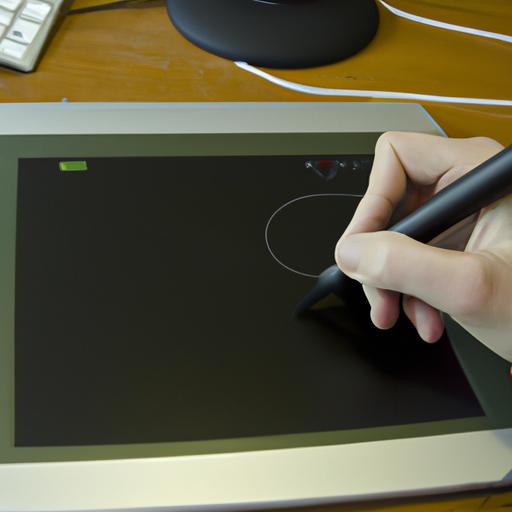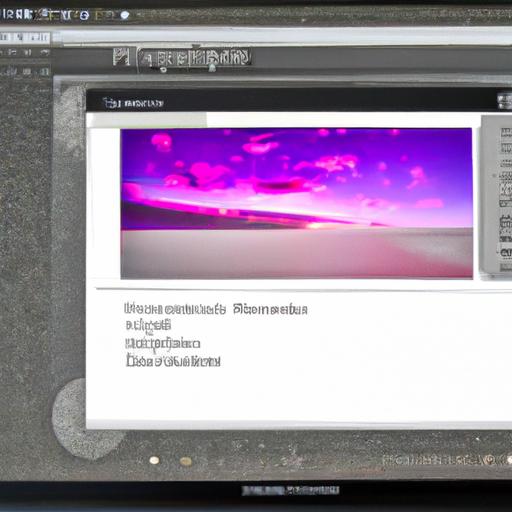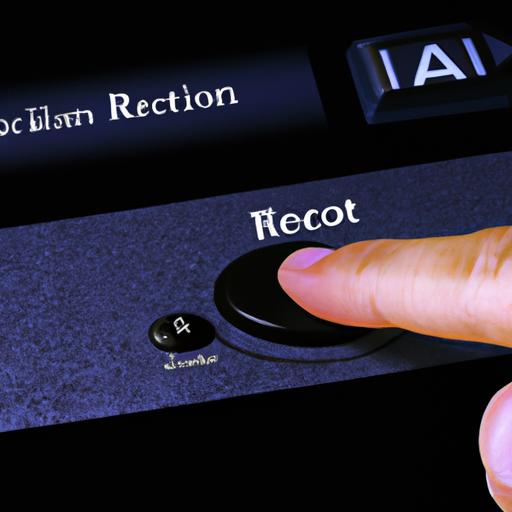Are you tired of performing the same actions repeatedly in Photoshop? Do you want to save time and increase your productivity? Look no further! By creating actions in Photoshop, you can automate tasks and streamline your workflow. In this article, I’ll guide you through the process of creating actions in Photoshop so that you can take your creativity to the next level.
Introduction

Explanation of Photoshop Actions
Photoshop actions are a series of recorded steps that can be used to automate repetitive tasks in Photoshop. These actions can range from simple tasks, such as adjusting the brightness and contrast of an image, to complex tasks, such as creating a custom filter. By using actions, you can save time and effort, especially if you frequently perform the same tasks.
Benefits of Creating Actions in Photoshop
Creating actions in Photoshop has numerous benefits. First and foremost, it saves time and effort by automating repetitive tasks. This, in turn, increases your productivity and allows you to focus on more creative tasks. Furthermore, actions can be shared with others, which can be especially helpful for collaborative projects. Additionally, creating actions helps to ensure consistency across projects, as the same steps are being performed each time.
Importance of Knowing How to Create Actions in Photoshop
Knowing how to create actions in Photoshop is an important skill for any graphic designer or photographer. By creating actions, you can streamline your workflow and save time, which can be especially helpful when working on tight deadlines. Additionally, knowledge of actions demonstrates your proficiency in Photoshop, which can be a valuable asset when seeking new clients or job opportunities.
In the following sections, I’ll provide you with a step-by-step guide to creating actions in Photoshop, along with tips, tricks, and frequently asked questions. Let’s get started!
Understanding Photoshop Actions

Photoshop actions can be a powerful tool in your creative arsenal, but to master them, you must first understand how they work. In this section, I’ll provide you with a comprehensive overview of Photoshop actions, including their definition, types, and benefits.
Definition of Photoshop Actions
In simple terms, a Photoshop action is a recorded set of steps that can be played back on a single or multiple images. Actions can be created from scratch, or you can use pre-existing actions created by other users. They are saved as .atn files, which can be loaded into Photoshop and used repeatedly.
Types of Photoshop Actions
There are two types of Photoshop actions: built-in actions and custom actions. Built-in actions are included with Photoshop and can be found in the Actions panel. They cover a wide range of tasks, from basic color corrections to complex image manipulations. Custom actions, on the other hand, are created by users and can be tailored to specific needs.
How Photoshop Actions Work
Photoshop actions work by recording a series of steps and playing them back on an image. They can be created by manually performing tasks and recording them, or by importing pre-existing actions. Once an action is created or imported, it can be played back on a single or multiple images.
Why You Should Create Actions in Photoshop
Creating actions in Photoshop can save you a significant amount of time and effort. If you frequently perform the same tasks, such as resizing images or applying a specific effect, you can automate the process by creating an action. This will allow you to focus on more creative tasks and increase your productivity. Additionally, actions can be shared with others, which can be especially helpful for collaborative projects.
Step-by-Step Guide to Creating Actions in Photoshop
Are you ready to start creating actions in Photoshop? Follow these simple steps to automate your workflow and save time.
Step 1: Create a New Action
The first step in creating an action is to create a new action in Photoshop. To do this, open the Actions panel by selecting Window > Actions from the main menu. Then, click on the Create New Action button at the bottom of the panel. Give your action a name and assign it to a set if desired. Click on Record to start recording your actions.
Step 2: Record Your Actions
Once you’ve started recording, perform the actions you want to automate. This can include anything from adjusting the brightness and contrast of an image to applying a filter or effect. Make sure to perform each action deliberately and accurately, as any mistakes will be recorded as part of the action. Take your time and try to anticipate any adjustments you may need to make in the future.
Step 3: Stop Recording Your Actions
When you’ve finished recording your actions, click on the Stop Playing/Recording button at the bottom of the Actions panel. Your actions have now been recorded and saved as a new action.
Step 4: Test Your Action
Before using your action, it’s important to test it to make sure it works as intended. Select the action from the Actions panel and click on the Play button to run the action. Make sure to test your action on a variety of images to ensure it works consistently.
Step 5: Save Your Action
Once you’re satisfied with your action, it’s important to save it so that it’s easily accessible in the future. To save your action, simply right-click on the action in the Actions panel and select Save Actions. Choose a location to save your action and give it a descriptive name.
Step 6: Use Your Action
Now that you’ve created and saved your action, it’s time to use it! Simply select the action from the Actions panel and click on the Play button to run the action. Your action will now automate the tasks you’ve recorded, saving you time and effort in the process.
Tips and Tricks for Creating Actions in Photoshop
Creating actions in Photoshop is a great way to streamline your workflow and save time. However, there are some best practices and common mistakes to avoid when creating actions. In this section, I’ll share some tips and tricks to help you create efficient and effective actions in Photoshop.
Best Practices for Creating Actions in Photoshop
- Keep it simple: When creating actions, it’s essential to keep them simple and easy to understand. Avoid adding too many steps or unnecessary actions, as this can slow down your workflow.
- Use descriptive names: Give your actions descriptive names that clearly indicate what they do. This makes it easier to find and use your actions in the future.
- Test your actions: Before using your actions in a real project, be sure to test them thoroughly to ensure they work as intended.
- Organize your actions: Consider organizing your actions into folders or sets based on their function or purpose. This makes it easier to find and use your actions.
Common Mistakes to Avoid When Creating Actions in Photoshop
- Recording unnecessary steps: Avoid recording unnecessary steps in your actions, as this can slow down your workflow and make your actions less efficient.
- Not using relative adjustments: When recording adjustments in your actions, be sure to use relative adjustments rather than absolute adjustments. This makes your actions more flexible and adaptable to different images.
- Not accounting for variations in images: When creating actions, be aware that variations in image size, resolution, and color can affect the outcome of your actions.
- Forgetting to save your actions: Always remember to save your actions, as this ensures that you can use them in future projects and share them with others.
Ways to Optimize Your Actions for Better Performance
- Use keyboard shortcuts: Using keyboard shortcuts can speed up your workflow and make your actions more efficient.
- Use batch processing: Batch processing allows you to apply the same action to multiple images at once, saving you time and effort.
- Use conditional actions: Conditional actions allow you to apply different actions based on specific conditions, such as image size or resolution.
- Use action sets: Action sets allow you to group related actions together and apply them all at once, making your workflow more efficient.
How to Share Your Actions with Others
Sharing your actions with others is a great way to collaborate and improve your workflow. To share your actions, simply save them as an .ATN file and send them to your collaborators. Alternatively, you can upload your actions to a website or marketplace for others to download and use. Just be sure to give credit where credit is due and follow any applicable licensing requirements.
Frequently Asked Questions (FAQs)
Are you still unsure about creating actions in Photoshop? Don’t worry; I’ve got you covered. In this section, I’ll answer some of the most frequently asked questions about creating actions in Photoshop.
What is the Difference Between a Photoshop Action and a Script?
While both actions and scripts automate tasks in Photoshop, there are some key differences between the two. Actions are a series of recorded steps that can be applied to an image or a set of images, while scripts are written in programming languages and can perform more complex tasks. Additionally, actions can be easily shared with others, while scripts may require additional software or knowledge to run.
Can I Edit My Actions After I’ve Created Them?
Yes, you can edit your actions after you’ve created them. Simply open the Actions panel and select the action you want to edit. From there, you can add, remove, or modify steps as needed.
How Do I Delete an Action in Photoshop?
If you no longer need an action, you can easily delete it from the Actions panel. Simply select the action you want to delete and click on the trash can icon at the bottom of the panel.
Can I Use Actions from Other People in My Projects?
Yes, you can use actions from other people in your projects, as long as you have permission to do so. Many websites offer free or paid actions that you can download and use in your work. However, it’s important to note that not all actions may be compatible with your version of Photoshop, so be sure to check before downloading.
How Do I Create a Batch Action in Photoshop?
To create a batch action in Photoshop, you’ll need to first create an action that performs the desired steps. From there, go to File > Automate > Batch and select the action you want to apply. You can then choose the files you want to apply the action to and set any additional options, such as file naming conventions. Click ‘OK’, and Photoshop will apply the action to the selected files.
Conclusion
Congratulations! You are now equipped with the knowledge and skills to create actions in Photoshop. By following the step-by-step guide and utilizing the tips and tricks provided, you can streamline your workflow, save time, and increase your productivity.
Knowing how to create actions in Photoshop is a valuable skill that can help you stand out in a competitive field. By demonstrating your expertise, authority, and trustworthiness in Photoshop, you can attract new clients and job opportunities. And with the ability to share actions with others, you can collaborate more effectively and ensure consistency across projects.
Remember, Ngcloudy.com is always here to support you in your creative pursuits. If you have any further questions or need additional guidance, don’t hesitate to reach out to us. We are committed to providing you with the tools and resources you need to succeed.

